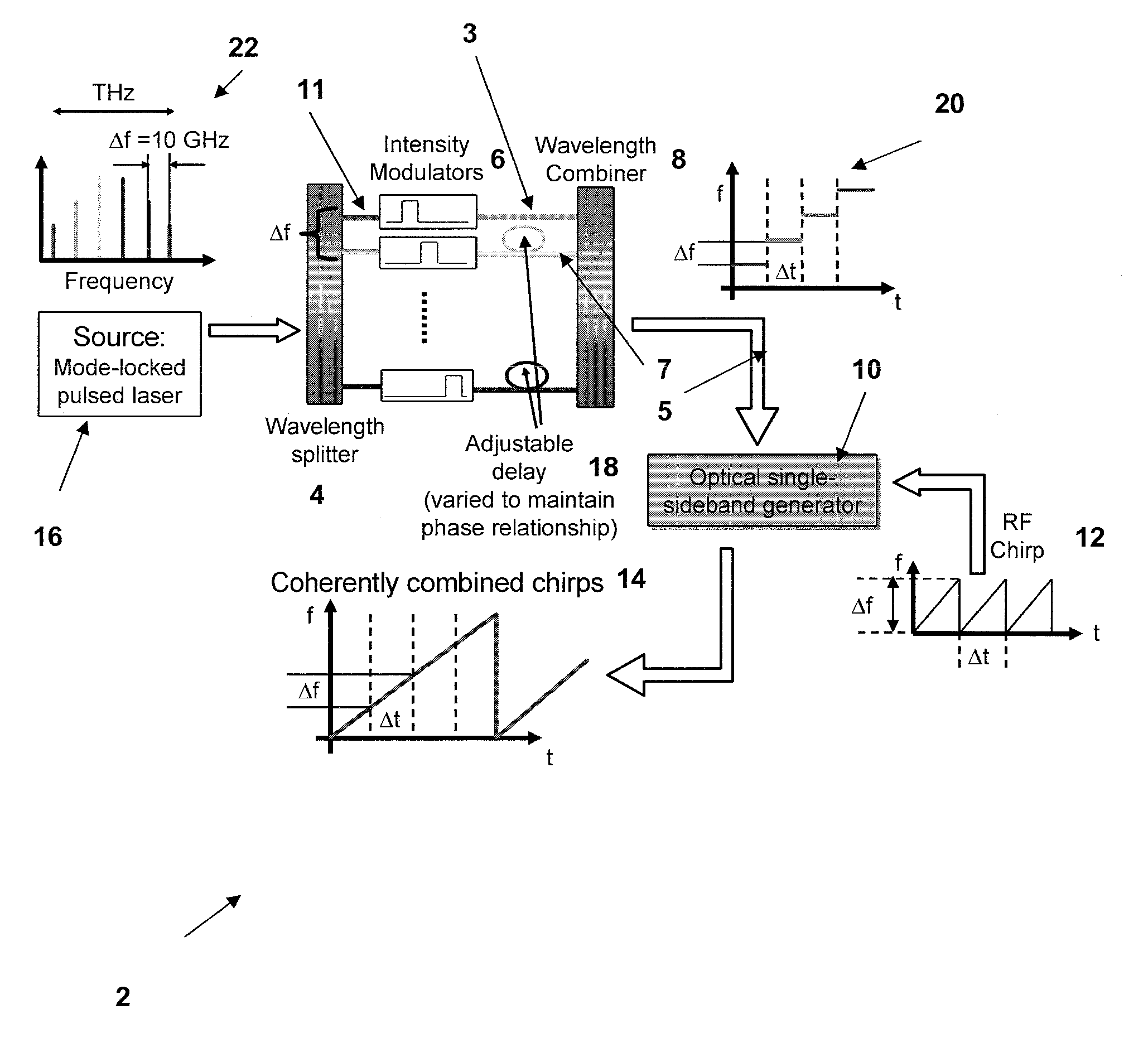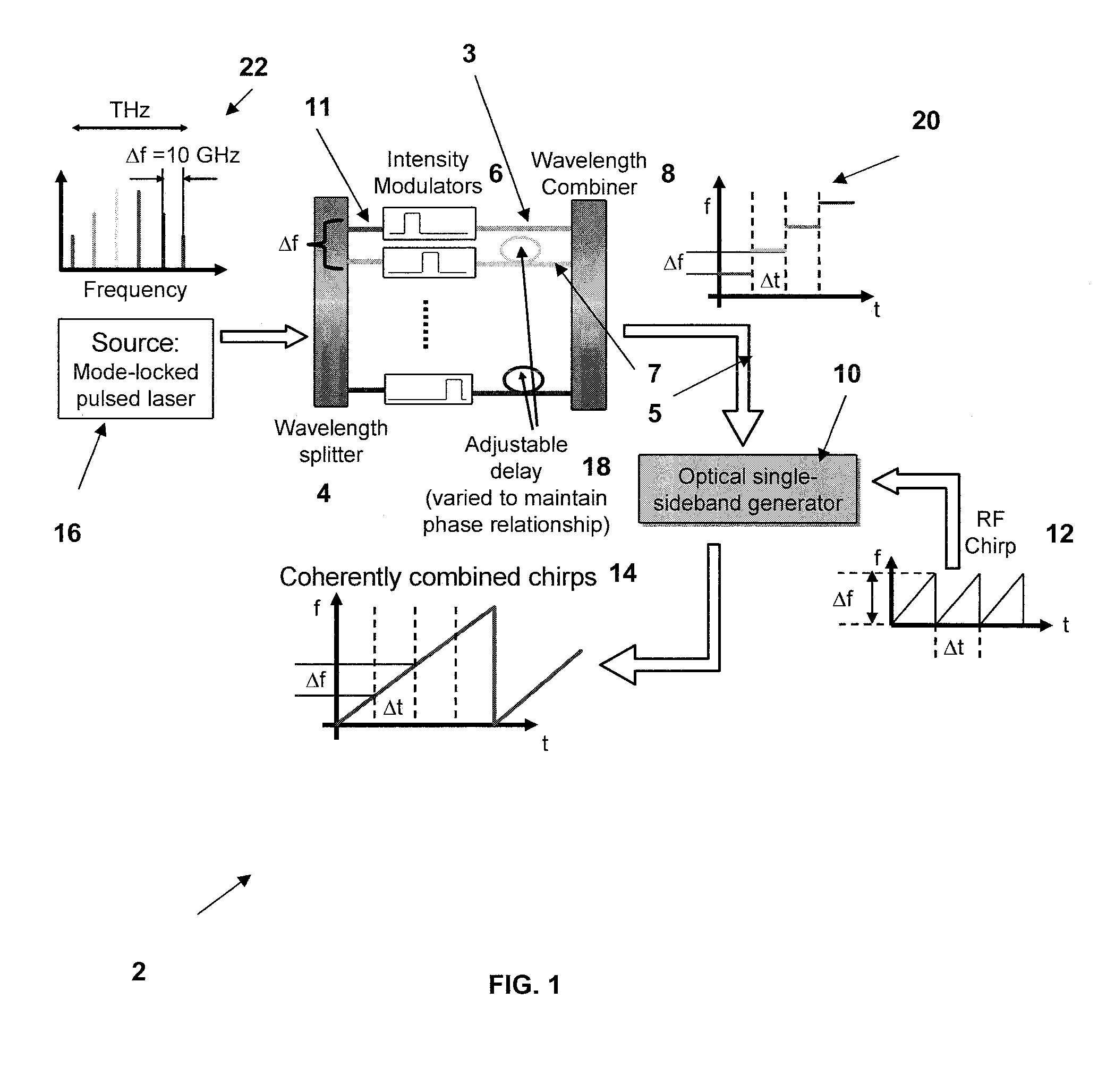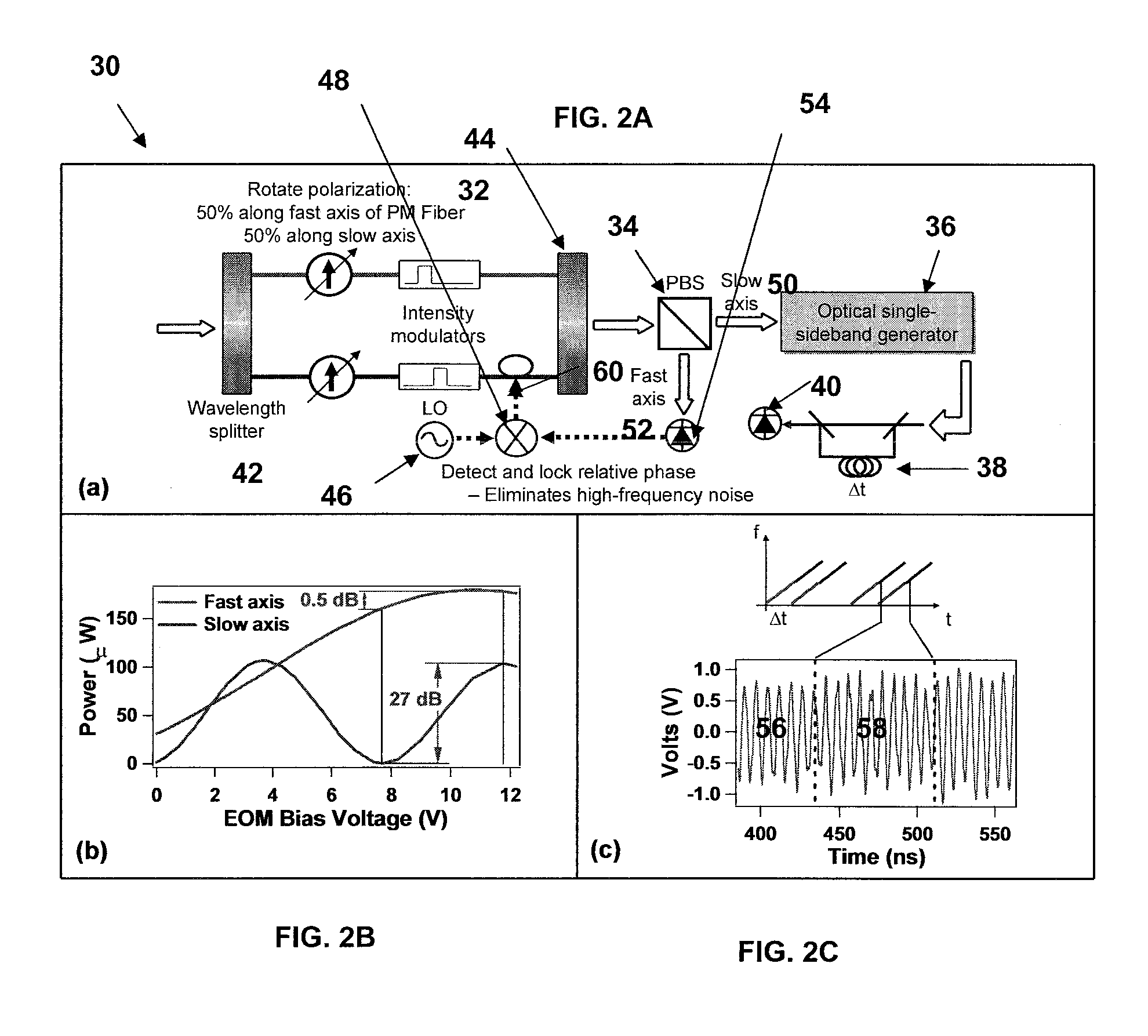Time-multiplexed optical waveform generation
a technology of time-multiplexed optical waveforms and optical waveforms, applied in time-division optical multiplex systems, multi-component communication, electromagnetic transmission, etc., can solve the problem that the phase modulator cannot be driven to an arbitrary phas
- Summary
- Abstract
- Description
- Claims
- Application Information
AI Technical Summary
Benefits of technology
Problems solved by technology
Method used
Image
Examples
Embodiment Construction
[0007]The invention involves a novel technique for manipulating the pulse train from a mode-locked laser to generate a custom optical waveform. Specifically, the invention is a technique to produce a broadband linear optical frequency ramp that covers 1.5 THz chirp in 75 μs.
[0008]The invention uses the discrete frequency lines of the frequency comb produced by a mode-locked laser 16 to generate many sub-chirps that are sequentially combined phase-coherently to construct a single broadband linear frequency ramp, as shown in FIG. 1. The comb components 11 are first spectrally separated by wavelength splitter 4 so each is transmitted along a separate optical path. Each frequency then passes through an electro-optic intensity modulator 6, which passes each frequency for 0.5 μs, and then extinguishes that frequency for the remainder of the chirp time in an output signal 3. The timing of the modulators 6 is adjusted so that recombination of the frequencies produces a stair-step waveform o...
PUM
 Login to View More
Login to View More Abstract
Description
Claims
Application Information
 Login to View More
Login to View More - R&D
- Intellectual Property
- Life Sciences
- Materials
- Tech Scout
- Unparalleled Data Quality
- Higher Quality Content
- 60% Fewer Hallucinations
Browse by: Latest US Patents, China's latest patents, Technical Efficacy Thesaurus, Application Domain, Technology Topic, Popular Technical Reports.
© 2025 PatSnap. All rights reserved.Legal|Privacy policy|Modern Slavery Act Transparency Statement|Sitemap|About US| Contact US: help@patsnap.com



